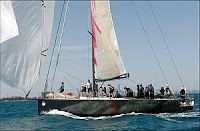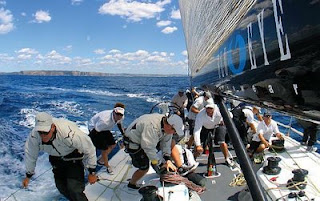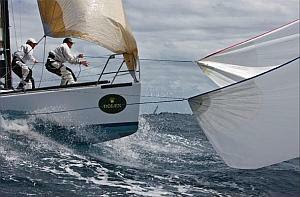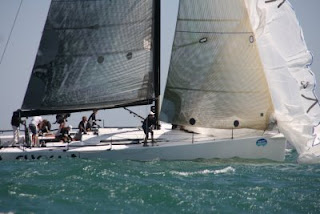Controlling the Beast

Sailing downwind in strong wind and waves is definitely the most challenging time for a helmsman. Incorrect technique or lack of concentration can have catastrophic consequences for the boat and is downright dangerous for the crew. Those readers old enough to remember the halcyon days of IOR boats with their masthead rigs and pinched in sterns will all have tales of horrendous broaches and involuntary gybes. It was a welcome relief when Bruce Farr and other New Zealand designers came along with fractional rigs on lighter boats with wider sterns. Today's IRC racers are a delight to steer and a welcome relief to all of us sufferers of "IOR back", incurred while wrestling those huge lumps of boats downwind. Heavy air running is probably the aspect of steering that requires the most natural ability of the steerer. A lot of sailors can be taught to steer by looking at the telltails, waves, angle of heel, etc, and after a while become quite competent, but only a rare few instin...










